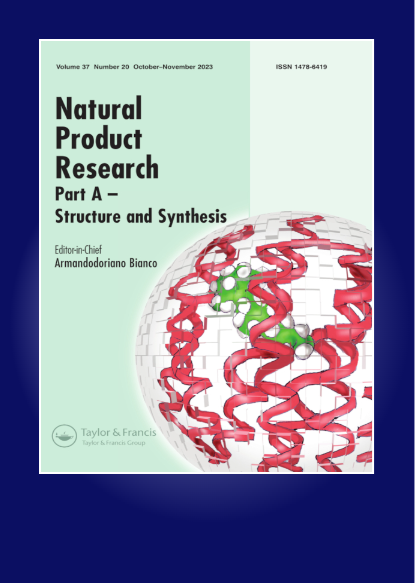石榴皮和咖啡果肉中的多酚对癌细胞的抗增殖和细胞毒性作用。
IF 1.6
3区 化学
Q3 CHEMISTRY, APPLIED
引用次数: 0
摘要
石榴皮(PP)和咖啡浆(CP)是食品工业的副产品,如果处理不当会造成环境污染。这些副产品含有大量多酚化合物,具有抗氧化和可能的抗癌特性。我们研究了 PP、CP 和两者 50-50% 的混合物中的多酚对 HeLa、A549、MDA-MB 和 Hek-293 细胞的抗增殖和细胞毒性活性。采用高效液相色谱/电喷雾离子化/质谱法测定了 PP 和 CP 提取物中的总酚含量,并分别采用 MTT(3-(4,5-二甲基噻唑-2-基)-2,5-二苯基-2H-四唑溴化物)和乳酸脱氢酶测定法评估了其抗增殖和细胞毒性潜力。结果显示,不同浓度或混合物的 PP 和 CP 多酚对 HeLa、A549 和 MDA-MB 细胞具有抗增殖和细胞毒性作用。在类似条件下处理 Hek-293 细胞时,未观察到明显的抗增殖作用。这些结果表明,单独或混合使用 PP 和 CP 多酚具有调节宫颈癌、乳腺癌和肺癌相关生物机制的潜力。本文章由计算机程序翻译,如有差异,请以英文原文为准。
Antiproliferative and cytotoxic effects of polyphenols from pomegranate peel and coffee pulp on cancer cells
Pomegranate peel (PP) and coffee pulp (CP) are by-products of the food industry that can cause environmental pollution if not handled adequately. These by-products contain a significant amount of polyphenolic compounds which have antioxidant and possibly anticancer properties. We investigated the antiproliferative and cytotoxic activities of polyphenols from PP, CP and a 50–50% mixture of both against HeLa, A549, MDA-MB and Hek-293 cells. The total phenolic content of the PP and CP extracts was determined by high performance liquid chromatography/electrospray ionisation/mass spectrometry, and the antiproliferative and cytotoxic potentials were evaluated by MTT (3- (4,5-dimethylthiazol-2-yl)-2,5-diphenyl-2H-tetrazolium bromide) and Lactate Dehydogenase assays, respectively. Results showed antiproliferative and cytotoxic effects of polyphenols from PP and CP when administered at different concentrations or mixtures on HeLa, A549 and MDA-MB cells. No significant antiproliferative effects were observed on Hek-293 cells treated under similar conditions. These results suggest the potential of PP and CP polyphenols, individually or in combination, to modulate biological mechanisms involved in cervical, breast and lung cancer.
求助全文
通过发布文献求助,成功后即可免费获取论文全文。
去求助
来源期刊

Natural Product Research
化学-医药化学
CiteScore
5.10
自引率
9.10%
发文量
605
审稿时长
2.1 months
期刊介绍:
The aim of Natural Product Research is to publish important contributions in the field of natural product chemistry. The journal covers all aspects of research in the chemistry and biochemistry of naturally occurring compounds.
The communications include coverage of work on natural substances of land and sea and of plants, microbes and animals. Discussions of structure elucidation, synthesis and experimental biosynthesis of natural products as well as developments of methods in these areas are welcomed in the journal. Finally, research papers in fields on the chemistry-biology boundary, eg. fermentation chemistry, plant tissue culture investigations etc., are accepted into the journal.
Natural Product Research issues will be subtitled either ""Part A - Synthesis and Structure"" or ""Part B - Bioactive Natural Products"". for details on this , see the forthcoming articles section.
All manuscript submissions are subject to initial appraisal by the Editor, and, if found suitable for further consideration, to peer review by independent, anonymous expert referees. All peer review is single blind and submission is online via ScholarOne Manuscripts.
 求助内容:
求助内容: 应助结果提醒方式:
应助结果提醒方式:


